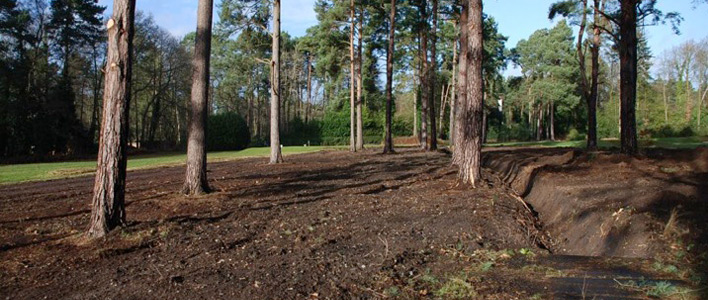Contact Us
- 1 Parklands Hamsterley Mill Rowlands Gill NE39 1HH
- Tel/Fax: +44 (0) 191 384 2556
- Mobile: 07967 818 719
Useful Links
- Please Click Here to view our useful links
Latest News
Chester le Street Golf
Before and after ...Read more
Ecology and Habitat Management
Ecology
Protecting and Enhancing the Environment
Golf and Wildlife
It is often forgotten that part of the pleasure derived from golf is experiencing the pleasant surroundings in which it is played. The sound of the skylark on the links or the sight of the woodpecker on an urban course can have a subliminal effect on even those who have no interest in wildlife.
Nature is ever changing and therefore non-intervention has, in itself, an effect on the environment. Many ecosystems are transitory and therefore have to be managed if the status quo is to be maintained. The process of producing a management plan can help to increase knowledge and awareness.
Land owners demonstrating a commitment to nature conservation, especially through the development of a management plan, are far more likely to secure funding and will ensure a better relationship with statutory bodies such as local authorities and Natural England.

Links - the home of golf
Sand dune habitats are important for wildlife. Dune grassland, dune scrub and the wet areas, or slacks, between sandhills all support a diverse range of plants, animals and insects.
Many of our most important dune areas, such as the coastlines of Norfolk, Cornwall, Merseyside and East Scotland, rely on golf courses for the conservation of the remaining wildlife. The careful management of these sites has ensured that species such as natterjack toads, sand lizards, stag beetles and orchids have survived, despite changes to the surrounding landscape.
Heathlands - Our Lowland Heritage
Typical heathland landscapes are characterised by dwarf shrubs such as heathers, bilberry and gorse. The nutrient-poor soils on which heathlands form, are ideal for golf as they also provide ideal growing conditions for fine-leaved grasses.
Many courses in the East Midlands and South East England support heathland vegetation. Mowing, low inputs of nutrition and careful management of the roughs on golf courses have helped to maintain large areas of heather-rich landscapes, along with acid grassland and patches of scrub.
Wetlands - Adding to the Golfing Challenge
Water features on golf courses provide opportunities for conservation and a golfing challenge. Ponds in particular are vital to the survival of many different species. Amphibians such as frogs and toads need water for part of their life cycle, as do dragonflies and a number of other insects.
Most golf courses have some water features, often in the form of drainage channels or as part of the designed landscape. The most important wetlands tend to be those that are well managed, with a long history and a diverse range of habitats.
Woodlands - Our Oldest Habitats
The feeling of stability and the structural diversity associated with woodlands is highly valued on most golf courses. When managed appropriately, woodlands can add considerably to the character of the golfing landscape. Some of our native wildlife is only found in woodland habitats and familiar species such as bluebells and badgers are found on many courses around the country. Woodlands are living entities which require management in order to ensure not only sustainable cover but also to keep them rich in wildlife.
Planting trees on golf courses can add much to the golfing challenge, but care must be taken when selecting species and laying out the woodland design. A carefully thought out approach, based on experience and reflecting the local landscape, is key to success in this area.
Farming and Wildlife
Farming Enviroment Plan
Sustainable farming and land management is vital to the conservation of many of our most valued habitats and landscapes, including, for example, flower-rich meadows and pastureland, hedgerows and stone walls, moorlands and peatland. Agri-environment schemes funded by the government can provide financial support to farmers and other land managers to help manage the land in ways that maintain, or improve, these habitats and landscapes.
Environmental Stewardship is now the main agri-environment scheme available to help farmers and land managers to deliver effective environmental management on their land. This scheme encompasses Entry-Level Stewardship (ELS) and Higher-Level Stewardship (HLS) - these, together with the old 'classic' schemes of Countryside Stewardship (CSS) and Environmentally Sensitive Areas (ESA) which are being phased out, are currently worth around £370m to farmers and land managers in England each year.











